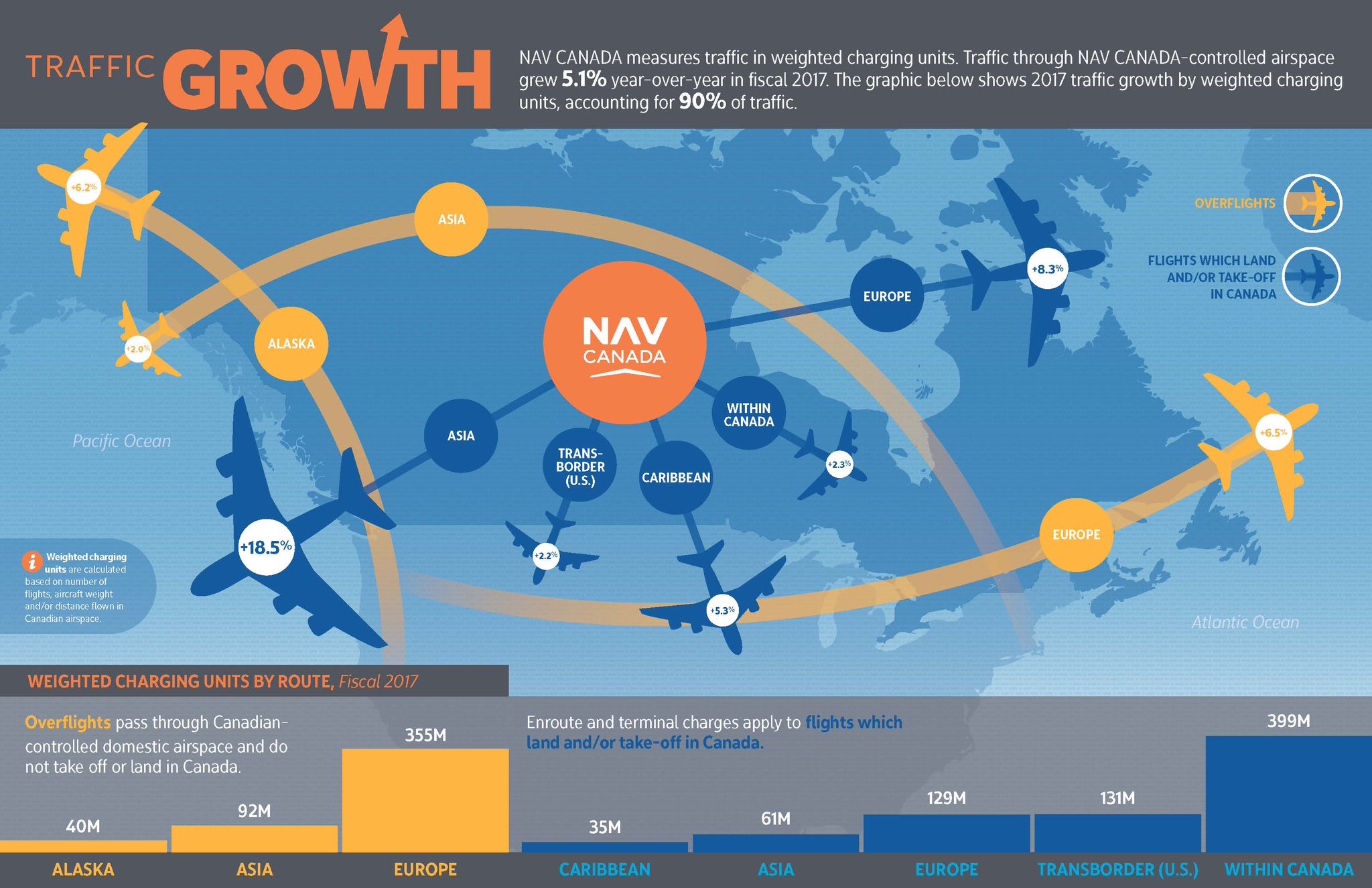
A monumental decision is in the works. Sometime this year Transport Canada will change the Eastern Toronto’s region’s access to aviation forever. This is the federal agency now managing the Pickering airport lands east of Toronto for the Canadian tax payer. The decision that needs to be made is if, when, and in what form to build a new airport on this billion–dollar land reserve. Transport Canada has been tasked by the Minister of Transport, the Honorable Marc Garneau, to provide advice and a process to determine the way forward. At question is when should a new airport in Pickering be built, and how will it fit in to the existing aviation infrastructure.
In response to our question on when will the KPMG “Pickering Lands Aviation Sector Analysis” be released, we received the following correspondence from Simon Rivet, Senior Advisor, Media Relations, Communications Group, Transport Canada.
“In response to your question, the Aviation Sector Analysis is a three-phased study commissioned to KPMG in 2016 to undertake an evidence-based economic analysis of the Pickering Lands. The objectives of the study are to:
The study is not complete and is now in the third phase. Upon completion of all three phases on the study, expected in spring 2019, Transport Canada will use the Aviation Sector Analysis as part of its considerations and advice to the Minister on the future of the Pickering Lands, in late 2019. The Aviation Sector Analysis is one of many inputs into the development of advice to the Minister. Next steps will be determined following the Minister’s review of the department’s advice.”
The fact that the first two phases of the study are complete and that they have indicated the need for a third phase speaks volumes on where this process is heading. But who is providing input on the third phase, both pro and con? With multiple other regions competing to channel Toronto’s amazing growth towards their cities, will the opportunity for an airport in Pickering get an unbiased hearing?
In the name of transparency and greater stakeholder engagement, the Phase 1 and Phase 2 reports should be released immediately. Building Pickering Airport is not, and can’t be, exclusively an airport decision. It is concluded from Mr. Rivet’s comments that existing airport operators and authorities have been consulted. Those entities have a vested interested in the continuing success of their airports.
But what of the other non-aviation stakeholders that look to Pickering Airport to drive economic benefits and regional growth well beyond the boundaries of the airport? In fairness, those parties that oppose the airport should equally have access to the reports.
These parties (Pro and Con) deserve an equal opportunity to input to the decision process as has already been granted to existing Southern Ontario airports and organizations. And let’s not forget the major private investors that are watching and waiting for the federal decision.
Transport Canada has the mandate to advise the decision makers on an airport. Does that mandate also extend to a development decision on the rest of the federal airport lands that were retained for economic purposes? How about the impact of an airport on the development of adjacent lands such as Seaton?
The future decision on building a new airport must be seen to deliver in total the greatest good for the City of Pickering, Durham Region and Ontario. The greatest good extends far beyond an airport and just its benefits. The new airport will be a lightning rod for growth and investment and its competition knows it.

Some of the competition includes Hamilton Airport supporters who want as much of Pickering’s growth channeled towards their city as possible. In addition, as Toronto Pearson Airport nears capacity, many of the businesses who have invested in that airport and the surrounding community of Mississauga are expecting a spike in profits. It’s only natural that Hamilton or Mississauga would want to forestall the capacity and the competition a new airport in Pickering will bring. Both have lobbied for delaying building Pickering Airport in the past. But given the economic geography why should anyone listen to them?
Why not listen to the elected representatives of the 2.3 million people who live within 30km of the new Pickering Airport? How about listening to the mayor of Pickering who made the construction of the airport part of his election platform, and was elected by a landslide? The 2018 civic elections showed that an overwhelming number of voters in Durham region want this airport to be built. If not with public money, then with private investors. But will repeated lobbying efforts by stakeholders from Hamilton or Mississauga and their airports win the day? Will the residents of Durham region soon find themselves driving two hours through the heart of Toronto traffic to Hamilton, just because someone hired a better lobbyist?
The Pro–Pearson/Hamilton Airport crowd are a powerhouse of economic interests representing 6% of Ontario’s GDP. In addition, they have a not–so–secret weapon working actively to promote their profit margins and squeeze the traveling public. A small local group called Land Over Landings is lobbying against building a new airport under any circumstances. Some locals are profiting from the status quo (both lifestyle and financially) and seem to have succeeded in getting a local liberal M.P. to support them. Pickering-Uxbridge MP Jennifer O’Connell doesn’t support building Pickering airport.
It’s little wonder that the current government might want to delay the decision to avoid it turning into an issue in the federal election planned for October of this year. It’s unlikely, however, that the opposition parties will grant them that wish. The KPMG report is now at the heart of this issue, the sooner it is public, the better it is for everyone.
Mark, there are some interesting developments noted here. The lack of transparency is rather disturbing. The politics are very thick and my sense is that the process is contaminated already. So, it is difficult to assume a fair and equitable outcome in my opinion. Michael
Mark, as always well written, and interesting.
You fail to address the core issue. Article 44 of GTAA’s legal agreement , that says:
“If the Tenant is continuously and actively meeting any capacity and demand requirements for
airport and aviation services at the Airport, the Landlord will not construct and operate, during
the Term, an airport as a Major International Airport within seventy-five (75) kilometres from any
point on the perimeter of the Lands.” (Pickering is within the 75)
The GTAA’s view, if that taken from their annual financial statements, is slightly different and most telling,- they say:
“The Ground Lease provides that Transport Canada will not permit the construction and operation of
another Major International Airport within 75 kilometres of the Airport during the term of the Ground
Lease or any renewal thereof, provided that the GTAA is meeting the demand requirements for aviation
services at Toronto Pearson.”
1) CIBC is their bank. and there is 6 Billion$ of debt.
2) Article 44 is in every NAS airport lease agreement.
3) To override it would “blow-up” the NAS system and all their debt holders. No more moat.
Capacity at Toronto does not exist..never did, never will. They now say:
“ We now expect to be able to meet demand with existing capacity throughout our 20-year planning period.”
That puts their sixth runway (proposed) beyond 2043 and total airport capacity beyond 2050 using their numbers – which are by the way wrong. Their 6 runway max capacity is over I million movements using their formulae and their numbers.
GTAA’s Eng is already talking about a 7th (e/w) runway using new technology – – waas laas.
Even if TC bypassed that agreement – – successfully – – the resultant operator’s landing fees would be astronomical.
Oshawa can do of what Pickering proposes now for ZIP $.. See London City videos.
All of the needles dollars removed from the system that you advocate for will kill aviation development in Canada for years.
Ivan
Allow Scarcity to be manufactured for profit? In order for article 44 to remain in force GTAA must prove beyond a shadow of doubt that it has capacity to handle Torontos growing jet traffic under all weather conditions 100% of the time. Not “could have capacity” if the sky is blue and if they magically get billions in funding, and a grace period, for some obscenely expensive airside rebuilding. One look at the number of flights canceled over the last three months, or delayed getting into or out of Pearson, tells you everything you need to know about their capacity fantasy. Nor should we suspend safety regulations or the night flight restrictions to allow a grand experiment on citizens of Toronto and the traveling public.
And What about the building cost to the public and our economy of allowing the GTAA to maintain a Toronto jet monopoly?
That said the Pearson players control 6% of Ontario’s GDP, and can hire an army of lawyers. I have no doubt that they could effectively fight the construction of a competing airport in Pickering tooth and nail. This will be an interesting test of our democracy. Our transportation minister may be in for the fight of his life, and should be ready for all sorts of tricksters.
Democracy? Interesting view. Oshawa airport, is operating at 3 % ( why) of Toronto island BBishop and can expand on existing land to size of london city u k. And do twice the numbers .( bishop is producing 2.6 b $ of spin now). That would equal 5.2 billion dollar in annual spin revenue and twice the spin revenue proposed by Ryan for his Pickering.
Ergo a 2.6 B$ spin,for 10 billion dollar Pickering in 10 years does NOT equal a 5.2 B $ spin in Oshawa for cost of 800 ft of runway and starting tomorrow.
As to noise complainers in Oshawa…. Transport or whoever leases that airport could buy out every house owner within 4 miles of Oshawa airport , resell to willing buyers or turn the properties into green fields, lengthen the runways , build taxiways and terminals and still be to the good on a Pickering required 10 B $ with money in the bank.
Pickering legal zoning in 2004 had 5 runways , 3 at 18,000 ft at one at 23,000 ft. NOBODY builds 23,000 ft runways ever. In 2015 revises legal zoning reduces to 3 runways @ 9000ft.. Aviation has a long history of outrunning the planners.
5000ft can now do what 9000 ft could do…. go transcontinental. Pickering is no longer a replacement for Toronto. Oshawa is a replacement for Pickering. Short runways , steep glide slopes, quiet aircraft, geared fans, and electric aircraft.
Mark you are moonwalking into the future. Turn around and look forward. 100 seat electrics are forecast by 2040. 18-20 seaters in a couple of years… Your Pickering will be redundant by the time it is built.
You really should google “plane spotting london city” and look at the background..
Ivan
Ps that 10 B$ leftover could also buy buttonville and expand b Bishop very nicely.
Note sure how much of this is just a flood the field media misinformation technique, or if you are being honest. Interesting, everything but Pickering, which has been the plan for decades. Like the average citizen and the politicians representing US, I think sticking to the plan is the best plan.